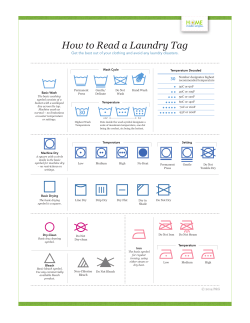
Guide to Naming Ionic Compounds
Guide to Naming Ionic Compounds February 18 Naming Ions and Ionic Compounds • Cations (+) – The name of a cation is the same as the name of the element – Find name either on the periodic table or from memory – A few cations need Roman numerals with the name Cations that need Roman Numerals • All d-block elements except Ag+, Zn2+, Cd2+ • Some p-block elements Zn2+ Ag+ Cd2+ Roman Numerals • I, II, III, IV, V, VI, VII, IX, X, etc. Some cations need Roman numerals because they can form more than one ion by losing different numbers of valence electrons • The numeral tells you the charge of the ion. For example: – Symbol – Ti2+ – Ti4+ Cation name titanium (II) titanium (IV) Exceptions • All d-block elements need Roman numerals except Ag+, Zn2+, Cd2+ – Silver, zinc, and cadmium will only form one ion. The charge will always be the same for these three cations. • Symbol – Ag+ – Zn2+ – Cd2+ Cation name silver zinc cadmium NOT: Silver (I) NOT: Zinc (II) NOT: Cadmium (II) Examples: Name to Symbol • Cation name – Sodium – Hydrogen – Vanadium (III) – Tin (II) Symbol Na+ H+ V3+ Sn2+ The Roman numeral tells us the charge of the vanadium and tin ions All cations have positive charges We know the charge of the sodium and hydrogen cations by looking at a periodic table Note on Determining the Charge • Depends on number of valence electrons • How many electrons does the atom need to gain or loose to reach a full valence shell? – Will loose to reach 0 electrons or – Will gain to reach 8 electrons – If it looses electrons, the ion is positive – If it gains electrons, the ion is negative Another way to think about ionic charge… Examples: Symbol to Name • Symbol – Sr2+ – Cd2+ – Cu2+ – Pb3+ – Pb2+ – K+ Cation name Strontium Cadmium Copper (II) Lead (III) Lead (II) Potassium Sr2+ and K+ do not need Roman numerals because they are in the s-block Cadmium does not need a Roman numeral because it is one of the three dblock exceptions The charge of the ion symbol tells us what Roman numeral to write in the name. Copper and lead need Roman numerals because they are found in the d-block and lower-left p-block and form more than one ion. Naming Ions and Ionic Compounds • Anions (-) – The name of a anion is similar to the name of the element • Find name either the periodic table or from memory • Drop the ending of the element name • Add –ide to the stem – NOTE: If the anion’s name ends in –ide and is NOT cyanide (CN-), hydroxide (OH-), or peroxide (O22-), it will be an ion of an element you find on the periodic table Examples: Name to Symbol • Cation name – Bromide – Oxide – Nitride All the names end in –ide: - Bromine bromide - Oxygen Oxide - Nitrogen Nitride Symbol BrO2N3- All anions have negative charges We know the charge of the anions by looking at a periodic table Another way to think about ionic charge… Examples: Symbol to Name • Symbol – S2– Cl– P3- Element name sulfur chlorine phosphorous Anion name Sulfide Chloride Phosphide Polyatomic Ions • A molecule with a charge • You will need to memorize the names • They behave just like monotomic cations and anions Examples: Name to Formula • Ion name – Oxalate – Chlorate – Acetate – Ammonium NH4+ Formula C2O42ClO3CH3COO- Examples: Formula to Name • Ion name – O22– CH3COO– Cr2O72– AsO43– MnO4- Formula Peroxide Acetate Dichromate Arsenate Permanganate Helpful Tip 1: Hints in names • Look for clues in the polyatomic ion names • Example: Cr2O72Dichromate - Chromate sounds like chromium - Di means two - Dichromate has two chromiums in it Helpful Tip 2: -ate vs. –ite • If two similar ions have names that end in –ate and –ite, -ate will have more oxygen – ClO3Chlorate 3 oxygens – ClO2Chlorite 2 oxygens – NO3Nitrate 3 oxygens – NO2Nitrite 2 oxygens – SO42Sulfate 4 oxygens – SO32Sulfite 3 oxygens Helpful Tip 3: Per- and Hypo• Per-: 1 more oxygen, same charge • Hypo-: 1 less oxygen, same charge – ClO4– ClO3– ClO2– ClO- Perchlorate Chlorate Chlorite Hypochlorite 4 oxygens 3 oxygens 2 oxygens 1 oxygen
© Copyright 2025












